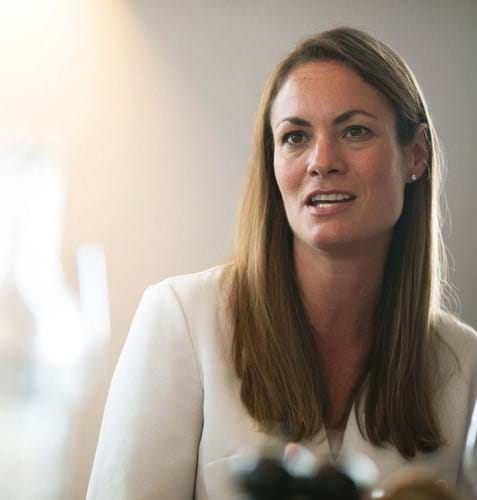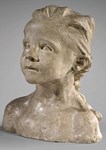“Challenging, rewarding, but not difficult,” is how Rebecca Davies, outgoing chief executive of LAPADA, views her three and a half years at the helm of the dealer trade body, as she returns to the contemporary art world for the role of business director at Marian Goodman Gallery.
We expect such diplomacy from our association chiefs. Indeed, the ability to be ‘a first-class ambassador’ to represent LAPADA’s 550-plus members is high on the list of qualities sought in her successor, according to the advertisement for the post.
So, what about those challenges? Big issues loomed large during Davies’ tenure, not least preparing members for the fallout from Brexit and threats to the trade in antique ivory objects.
As ATG asked Davies to share the lessons of her time at LAPADA, there is a sense of unfinished business, as her departure coincides with the end of the ivory consultation period in December. But there is pride in what’s been achieved, too.
ATG: Your proudest moment at LAPADA?
Davies: The redevelopment of the LAPADA website as a marketplace portal for our members (launched November 2015). Improvements are ongoing but it’s been so satisfying to hear from members who are making sales through the site and encountering new clients.
Regrets – do you have any?
The only regret is not being able to continue the projects that are still at the forefront of the role – like the website. It’s the sense of giving up my baby, so to speak! But I hope whoever takes over will use their digital expertise to drive the platform forward.
You’re leaving LAPADA before we know the fate of the trade in antique ivory.
The past two years of my life have been spent talking a lot about ivory! After I leave there will be further consultation on the operation of any exemptions we are given, which will need trade body input led by BAMF.
What can the trade realistically hope from the consultation?
Dealers and collectors want clarity and I hope this consultation delivers considered and rational exemptions – a reasonable ‘de minimis’ and definition of ‘cultural objects’ – so that we continue to have a market that respects these objects.
There is clearly government recognition that there is no direct link between the trade in these items and the contemporary market for poached ivory. We are all for getting rid of the ivory dross in the market.
So you don’t think the game is up for buying and selling antique ivory?
Absolutely not. We need to make sure we respond in numbers. It was great to see ATG’s article last week on how to take part and we’ve reached out to our members to make sure as many respond as possible.
Your message to government regarding treatment of small businesses?
Most of our members and art market firms in general are micro-businesses (ie employing less than 10 people) and firms of this size make up 96% of all UK businesses. So the government can’t ignore them.
LAPADA’s government lobbying and admin help for dealers are vital parts of what we do. Dealers face so much paperwork in every aspect of their business, that there is simply less time to “do business”.
The one piece of red tape you’d wish to see discarded?
Some detail in The Consumer Contracts (Information, Cancellation and Additional Charges) Regulations 2013 creates big financial risk for dealers. These rules were drafted for distance selling, with big retailers in mind, not small businesses selling unique antique objects. We get constant calls from dealers on what the implications are.
Requirements, all to do with distance selling, include providing exhaustive information to the client and if not, then the client has up to a year to return the goods. The cost of shipping is on the dealer’s shoulders.
“Dealers face so much paperwork that there is less time to do actual business
The common issue fine art and antiques share with the contemporary art market?
We’re united on the issues that affect the wider art world. The big one is Brexit’s impact on importing and exporting and how art will be managed across borders.
Marian Goodman Gallery operates in New York, London and Paris so the common thread is how things will move towards between the UK and Europe. SLAD (The Society of London Art Dealers) represents Marion Goodman and 150 fine art galleries, so Christopher (Battiscombe, director general) will be my go-to trade body man!
What can the antiques world learn from contemporary art?
It’s the same messages we’ve been giving to members – present your stock in an aspirational way, embrace digital and take time to foster client relationships. It’s easier to maintain a client than win a new one.
Advice to your successor?
Remember that we represent a range of dealers and that the same issues don’t apply to each and every member. That’s the learning curve. For instance, furniture dealers aren’t concerned with Artist’s Resale Right, and art dealers aren’t so worried about ivory.
You came from contemporary art and are now returning there. May we class you as an antiques convert?
I’m fully converted! I’ve been so fortunate. When I started at LAPADA in 2014 I had an appreciation of antiques but no specific knowledge. I look through my house now at the things I’ve bought from members and they give me a lot of joy. It’s been a great learning curve – and I won’t stop coming to the fairs, so you haven’t seen the last of me.
Curriculum Vitae
1997-1998
Assistant to international director, Impressionist and Modern Art, Christie’s New York
2000-2001
MA in History of Art, Courtauld Institute of Art, London
2005-2010
European business director, Haunch of Venison
2010-2014
Managing director, Blain|Southern Gallery, London
2014-2017
Chief executive officer, LAPADA
2014-2017
Treasurer, British Art Market Foundation
2018
Business director, Marian Goodman Gallery














